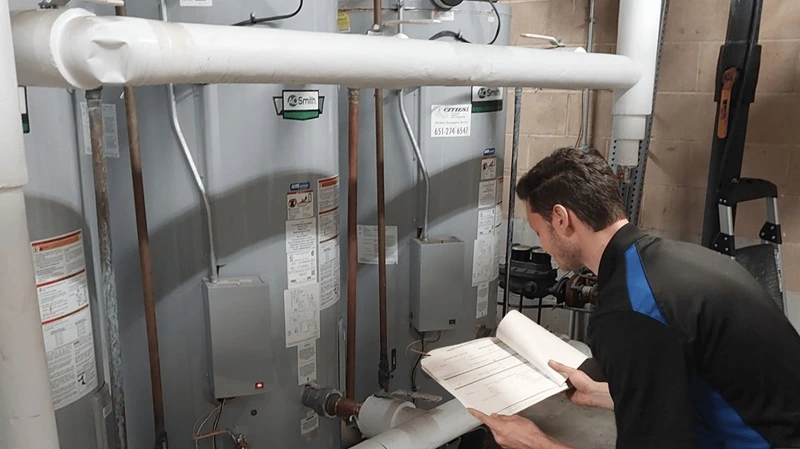As a property manager or maintenance technician, the safety and well-being of your tenants is paramount. While routine maintenance and tenant relations often take center stage, having a robust plan in place for severe weather events is not just good practice – it’s an absolute necessity. From unexpected tornadoes to flash floods and damaging hail, severe weather can strike with little warning, and being unprepared can have devastating consequences.
Think for a moment about the sheer number of individuals who could be in your commercial building at any given time. Employees, clients, visitors – all relying on you to provide a safe environment. When the skies darken and the alerts sound, will you be ready to guide them to safety?
Why a Reactive Approach Simply Isn’t Enough
Waiting until a severe weather warning is issued to figure out what to do is a recipe for chaos and potential disaster. Panic can set in, communication can break down, and valuable time can be lost. A proactive, well-defined severe weather plan offers numerous crucial benefits:
- Saves Lives: This is the most important reason. A clear plan ensures everyone knows where to go, what to do and how to stay safe during a dangerous event.
- Minimizes Injuries: Designated shelter areas and practiced procedures reduce the risk of injuries from flying debris, collapsing structures or other hazards.
- Reduces Property Damage: While safety is the priority, a good plan can also include steps to secure vulnerable equipment and areas, potentially mitigating costly damage.
- Ensures Business Continuity: By having a plan in place, you can facilitate a quicker and more organized return to normal operations after the weather event passes.
- Reduces Liability: Demonstrating due diligence in preparing for foreseeable risks like severe weather can help protect you and the building owners from potential liability issues.
- Builds Tenant Confidence: Knowing that building management has a comprehensive safety plan in place fosters trust and provides tenants with peace of mind.
Key Components of an Effective Severe Weather Plan
So, what should a comprehensive severe weather plan for a commercial building include? Here are some essential elements:
- Designated Shelter Areas: Identify and clearly mark designated safe areas within the building. These should ideally be interior rooms on the lowest level, away from windows and exterior walls. Consider factors like structural integrity and capacity.
- Communication Protocols: Establish clear communication channels to alert tenants of severe weather threats and provide instructions. This might include a building-wide intercom system, email or text alerts, or designated floor wardens.
- Emergency Supplies: Prepare and maintain emergency supply kits in designated shelter areas. These should include items like flashlights, battery-powered radios, first-aid kits, water and non-perishable snacks.
- Evacuation Procedures (for certain events): While sheltering in place is often the safest option for events like tornadoes, your plan should also outline evacuation procedures for other scenarios, such as flash flooding requiring movement to higher ground. Clearly defined escape routes and assembly points are crucial.
- Training and Drills: Regularly educate tenants and staff on the severe weather plan and conduct practice drills. This ensures everyone knows what to do and can react calmly and effectively under pressure.
- Monitoring Weather Conditions: Assign responsibility for monitoring weather forecasts and alerts from reliable sources like the National Weather Service.
- Post-Event Procedures: Outline steps to take after the severe weather has passed, including assessing damage, accounting for all occupants, and communicating updates.
- Regular Review and Updates: Your severe weather plan should not be a static document. Review and update it annually, or whenever there are significant changes to the building layout or tenant population.
Your Role as Property Manager or Maintenance Technician
As the boots on the ground, you play a critical role in developing, implementing and maintaining the severe weather plan. This includes:
- Leading the development of the plan: Collaborating with building owners, safety consultants and tenants to create a comprehensive and effective strategy.
- Ensuring clear communication: Making sure all tenants and staff are aware of the plan and understand their roles.
- Maintaining emergency supplies: Regularly checking and replenishing emergency kits.
- Conducting training and drills: Organizing and facilitating practice sessions to familiarize occupants with the procedures.
- Taking swift action during an event: Implementing the plan, guiding tenants and ensuring their safety.
- Assessing and addressing any damage: Coordinating repairs and ensuring the building is safe for re-occupancy after the event.
Don’t Wait for the Warning – Prepare Today
Severe weather is an inevitable reality. As a property manager or maintenance technician, taking proactive steps to develop and implement a comprehensive severe weather plan is not just a professional responsibility – it’s a moral one. By prioritizing preparedness, you can significantly enhance the safety and well-being of everyone within your commercial building and weather any storm with greater confidence. Don’t wait for the warning signs; start planning today.
BMM provides various maintenance services for multi-family and commercial buildings. If you need help developing a severe weather plan or with the maintenance needs of your property, don’t hesitate to reach out. You can call us at 763-541-4886 or contact us.


